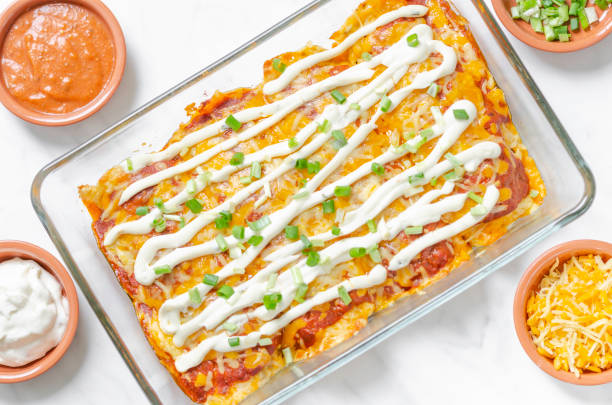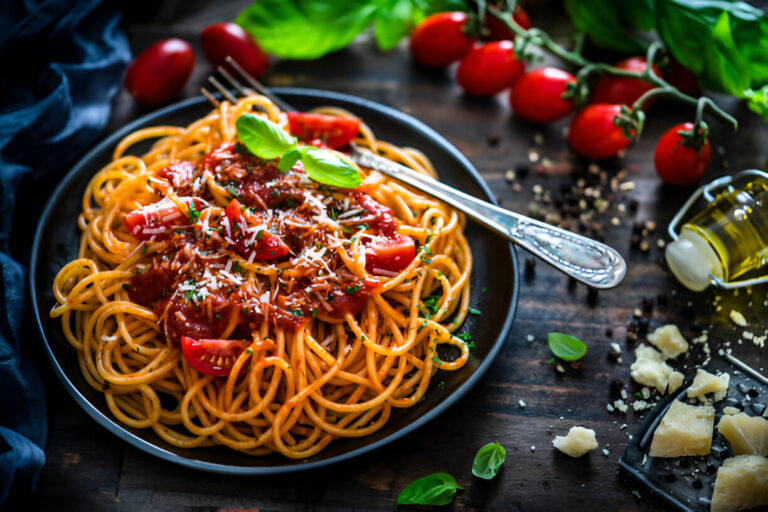Philly Cheesesteak Pasta: A Delicious Comfort Food Fusion
Philly Cheesesteak Pasta is a delicious fusion dish that marries the beloved flavors of a classic Philadelphia cheesesteak with the comforting heartiness of pasta. This dish takes the savory elements of a traditional cheesesteak—sliced steak, melted cheese, and sautéed onions and peppers—and transforms them into a satisfying pasta meal that is perfect for any time of day. With its creamy texture and rich flavors, Philly Cheesesteak Pasta appeals to those seeking convenience and comfort in their cooking.
The origins of this culinary creation lie in the popularity of both the iconic cheesesteak sandwich and pasta dishes in American households. The cheesesteak, born in Philadelphia in the early 20th century, showcases the perfect combination of thinly sliced beefsteak, gooey cheese, and a medley of toppings, all packed into a soft hoagie roll. By adapting these quintessential components into a pasta recipe, home cooks can enjoy the essence of the Philly cheesesteak in a new and exciting way.
This dish not only provides a unique twist on two classic favorites but also offers a delightful combination of textures and flavors that make it irresistible. Its versatility allows for a variety of adaptations, making it an accessible option for families and food enthusiasts alike. Whether served as a weeknight dinner or a crowd-pleasing dish for gatherings, Philly Cheesesteak Pasta is sure to become a new favorite for anyone who loves comfort food with a creative flair.
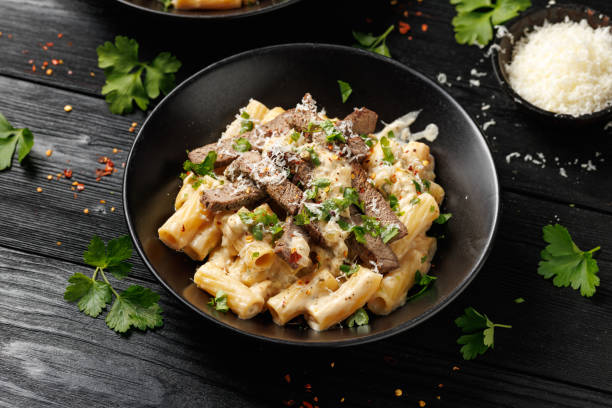
What is Philly Cheesesteak?
The Philly cheesesteak sandwich originated in the early 20th century in the city of Philadelphia, Pennsylvania. This iconic dish was conceived by Pat and Harry Olivieri, who first sold it from a hot dog truck. The traditional cheesesteak consists of thinly sliced beefsteak, typically ribeye or sirloin, cooked on a grill and served in a soft hoagie roll. To enhance the flavor, it is topped with melted cheese and often accompanied by sautéed onions and bell peppers.
One of the defining characteristics of a Philly cheesesteak is the choice of cheese. While there are several options available, the quintessential choices include Provolone, Cheez Whiz, and American cheese. Each cheese lends a unique texture and taste, allowing cheesesteak lovers to customize their sandwiches. Additionally, variations often incorporate mushrooms, hot peppers, or pickled peppers to elevate the flavor profile and add a satisfying crunch.
This sandwich not only reflects the culinary heritage of Philadelphia but also showcases the influence of Italian-American culture. Over the years, Philadelphia has become synonymous with this savory treat, and it remains a staple in the city’s gastronomic landscape, attracting both locals and tourists alike.
How Philly Cheesesteak Pasta Came to Be
The evolution of Philly Cheesesteak Pasta is a delightful example of how culinary traditions can merge to create something new and exciting. As food enthusiasts began exploring fusion cuisines, the concept of combining beloved dishes emerged. The popularity of Italian-American pasta dishes paired seamlessly with the rich flavors of the classic Philly cheesesteak, ultimately inspiring the creation of this pasta dish.
Trends in cooking and dining have seen home cooks increasingly gravitate towards recipes that offer convenience without sacrificing flavor. Philly Cheesesteak Pasta answers this call, enabling families to experience the beloved flavors of the cheesesteak in a comforting, one-pot meal. Furthermore, the dish’s adaptability allows for a wide range of personalization, making it a popular choice for gatherings and family dinners.
The cultural significance of blending Italian-American influences with Philadelphia’s culinary staples reflects the ever-evolving nature of American cuisine. This fusion not only celebrates the rich history of both dishes but also encourages creativity in the kitchen, inviting cooks to experiment with flavors and ingredients that appeal to their tastes.
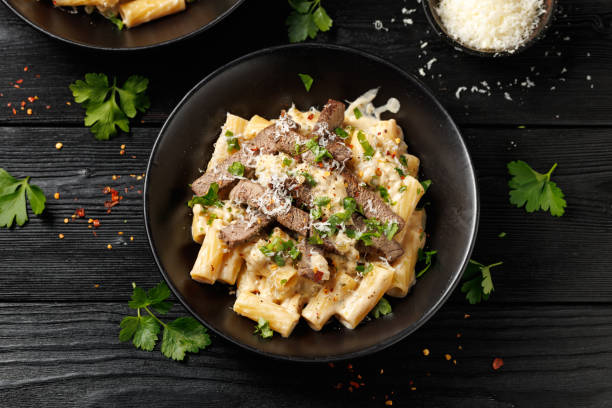
Ingredients Needed for Philly Cheesesteak Pasta
To create a mouthwatering Philly Cheesesteak Pasta, you will need a selection of ingredients that highlight the flavors of the classic dish while maintaining the comforting essence of pasta. Here’s a detailed list of what you’ll need:
- Pasta: Choose a type of pasta that can hold up to creamy sauces, such as penne, rigatoni, or fettuccine.
- Meat Choices: Ribeye or sirloin steak works best due to their tenderness and flavor.
- Cheese Options: Provolone, Cheez Whiz, or American cheese are traditional, but feel free to experiment with your favorites.
- Vegetables: Sliced bell peppers and onions add texture and sweetness to the dish.
- Seasonings and Sauces: Salt, pepper, garlic powder, and a creamy sauce like Alfredo or a simple butter sauce can enhance the flavors.
For those looking to adapt the recipe to suit dietary needs, consider the following substitutions:
- Vegetarian Options: Substitute the meat with mushrooms or tempeh for a plant-based alternative.
- Gluten-Free Pasta: Use gluten-free pasta options for those with gluten sensitivities.
Detailed Recipe: Philly Cheesesteak Pasta
Ingredients
- 8 oz of pasta (penne, rigatoni, or fettuccine)
- 12 oz of ribeye or sirloin steak, thinly sliced
- 1 cup of sliced bell peppers (red, green, or yellow)
- 1 cup of sliced onions
- 1 cup of cheese (Provolone, Cheez Whiz, or American)
- 2 tablespoons of olive oil
- 2 cloves of garlic, minced
- Salt and pepper to taste
- Optional: ½ cup of Alfredo sauce for a creamier texture
Directions
- Cook the pasta according to package instructions until al dente. Drain and set aside.
- In a large skillet, heat olive oil over medium heat. Add the sliced steak, season with salt and pepper, and cook until browned. Remove from the skillet and set aside.
- In the same skillet, add a little more olive oil if needed and sauté the sliced onions and bell peppers until softened and slightly caramelized.
- Return the cooked steak to the skillet and mix with the sautéed vegetables. Add minced garlic and cook for another minute until fragrant.
- Stir in the cooked pasta, cheese, and Alfredo sauce (if using). Mix well until the cheese melts and everything is evenly coated.
- Serve hot, garnished with chopped parsley or additional cheese as desired.
Cooking Tips and Advice
To ensure the best results with your Philly Cheesesteak Pasta, consider the following tips:
- Cooking Steak: Aim for medium-rare to medium doneness for the best flavor and tenderness. Allow the steak to rest for a few minutes after cooking to retain its juices.
- Pasta Tips: Cooking pasta al dente not only improves the texture but also allows it to absorb the flavors of the sauce better.
- Variations: Customize the dish by adding spicy ingredients like jalapeños or experimenting with different types of cheese.
Variations of Philly Cheesesteak Pasta
Philly Cheesesteak Pasta is incredibly versatile, allowing you to experiment with various ingredients and flavors. Here are some popular variations:
- Vegetarian Options: Substitute the steak with hearty vegetables such as mushrooms, tempeh, or lentils, mimicking the texture of meat.
- Adding More Vegetables: Enhance the nutritional value by incorporating additional veggies like zucchini or spinach.
- Spicy Variations: Include jalapeños or use spicy cheese to add a kick without overpowering the dish.
- Gluten-Free Adaptations: Use gluten-free pasta to cater to those with gluten sensitivities while keeping the rich flavors.
Nutritional Information
Enjoying a serving of Philly Cheesesteak Pasta can provide a satisfying meal with a solid nutritional profile. Here’s an overview of what to expect:
- Average calories per serving: Varies based on ingredients, but typically around 450-600 calories.
- Protein: The dish offers a good amount of protein from the steak, making it a hearty option.
- Fats: Cheese and olive oil contribute to the fat content, so consider adjusting cheese amounts for a lighter option.
- Carbohydrates: Pasta provides the necessary carbs for energy, with options for whole grain pasta to increase fiber content.
To make the dish healthier, consider using less cheese or whole grain pasta options for added nutrients.
Popular Side Dishes to Serve with Philly Cheesesteak Pasta
To round out your meal, consider serving Philly Cheesesteak Pasta with complementary side dishes:
- Side Salads: A crisp green salad with a tangy vinaigrette can provide a refreshing contrast.
- Garlic Bread: Serve with delicious garlic bread or cheesy breadsticks to complement the pasta’s flavors.
- Dipping Sauces: Consider offering additional sauces for dipping, such as marinara or a spicy aioli.
Where to Find the Best Philly Cheesesteak Pasta
If you’d rather dine out than cook, there are several places where you can discover delightful Philly Cheesesteak Pasta:
- Popular Restaurants: Many Italian restaurants and modern American eateries in Philadelphia and across the country feature unique spins on this dish.
- Online Options: Several meal delivery services and food platforms offer this dish for quick and convenient dining.
- Local Delis or Italian Eateries: Check local listings for delis and eateries specializing in Philly cheesesteaks, as they may have their own pasta variations.
FAQs about Philly Cheesesteak Pasta
What type of pasta is best for Philly Cheesesteak Pasta?
Recommended pasta shapes include rigatoni, penne, or fettuccine. These types hold sauces well and enhance the overall experience.
Can I make Philly Cheesesteak Pasta in advance?
Yes, you can prepare the dish in advance and store it in the refrigerator for up to three days. Reheat it over low heat on the stove or in the microwave.
What cheese should I use?
Provolone, Cheez Whiz, and American cheese are classic choices that melt beautifully. Experimenting with other cheeses like pepper jack can add unique flavor.
Can I make this dish spicy?
You can incorporate heat by adding jalapeños or using spicy cheese varieties. Adjust the level of spiciness to suit your preferences.
Does this dish freeze well?
To freeze leftovers, store in an airtight container. It can be frozen for up to three months. Reheat over low heat, adding a splash of water or broth to maintain creaminess.
Conclusion
Philly Cheesesteak Pasta is a creative and comforting dish that perfectly combines the flavors of a classic cheesesteak with the satisfaction of pasta. Whether you try your hand at making it at home or seek out a local restaurant’s version, this dish promises to delight your taste buds. With its versatility and ease of preparation, it invites you to explore different ingredients and variations that suit your personal taste.
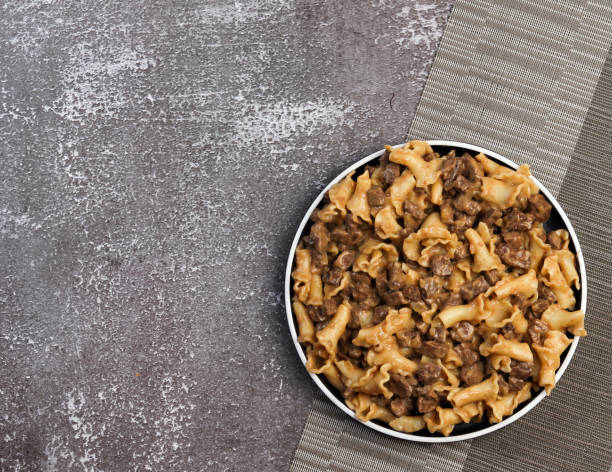
Philly Cheesesteak Pasta
Equipment
- 1 Large pot for boiling pasta
- 1 Skillet or frying pan
- 1 Colander
- 1 Measuring cups and spoons
- 1 Cooking spatula or wooden spoon
- 1 Serving bowl
Ingredients
- 12 ounces penne pasta
- 1 pound beef sirloin, thinly sliced
- 1 tablespoon olive oil
- 1 medium onion, thinly sliced
- 1 bell pepper thinly sliced (any color)
- 3 cloves garlic, minced
- 1 teaspoon salt
- ½ teaspoon black pepper
- 1 teaspoon paprika
- 1 cup beef broth
- 1 cup heavy cream
- 1 ½ cups provolone cheese, shredded Can substitute with Swiss or mozzarella.
- to taste fresh parsley for garnish Optional.
Instructions
- Begin by cooking the penne pasta according to the package instructions in a large pot of salted boiling water. Once cooked, drain and set aside.
- In a large skillet, heat the olive oil over medium-high heat. Add the thinly sliced beef sirloin and season with salt, black pepper, and paprika. Cook for about 4-5 minutes until browned. Remove the beef from the skillet and set aside.
- In the same skillet, add sliced onions and bell peppers. Cook for 5-7 minutes, stirring frequently until the vegetables are soft.
- Add minced garlic to the skillet and sauté for an additional minute until fragrant.
- Return the cooked beef to the skillet with the vegetables. Pour in the beef broth and the heavy cream. Stir gently to combine and let it simmer for 3-4 minutes.
- Once the sauce has thickened slightly, add the cooked penne pasta and 1 cup of shredded provolone cheese. Stir until the pasta is evenly coated and the cheese has melted.
- Taste and adjust the seasoning if necessary. Add more salt or pepper to your liking.
- Serve the pasta in bowls, garnished with the remaining provolone cheese and fresh parsley if desired.




